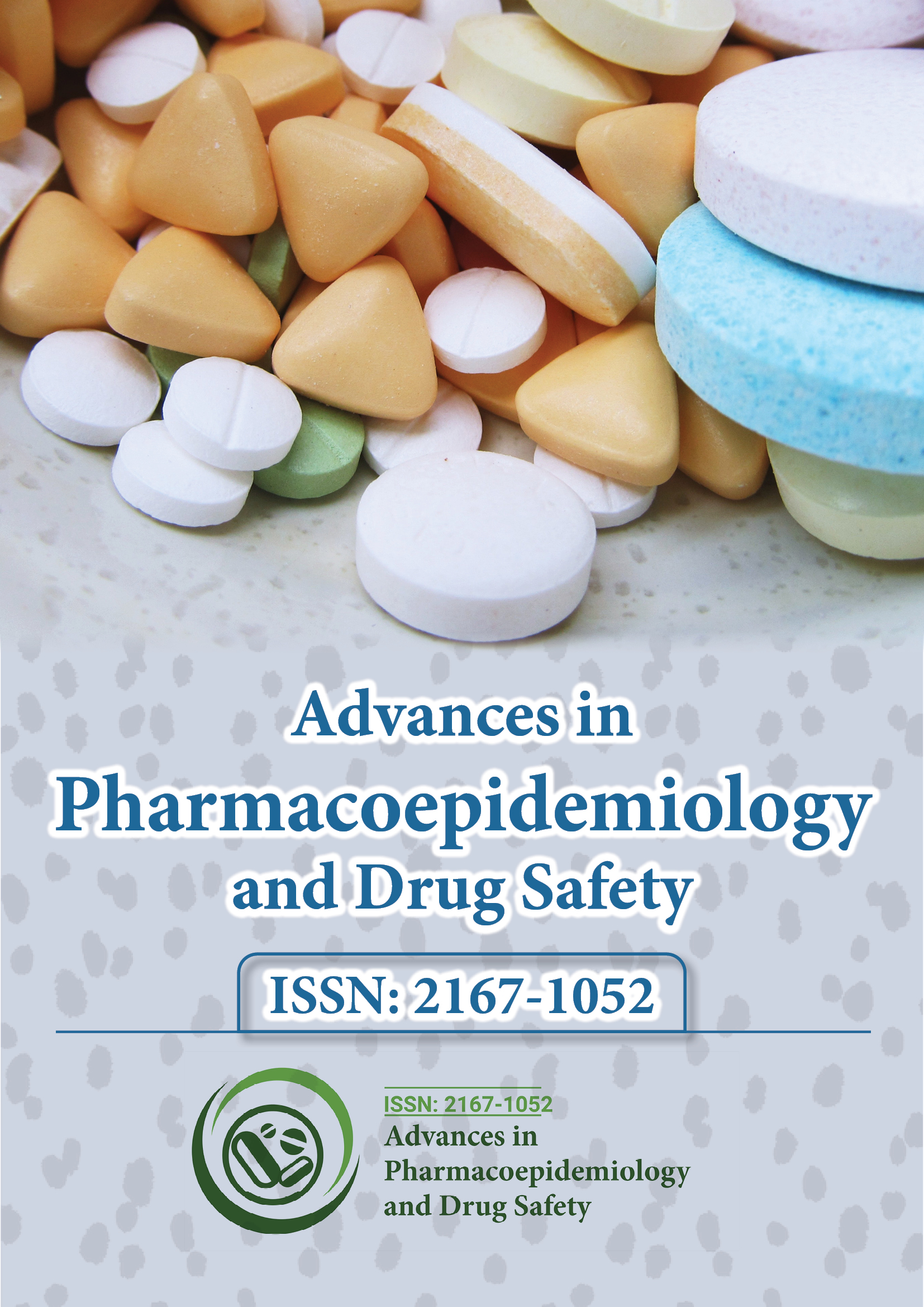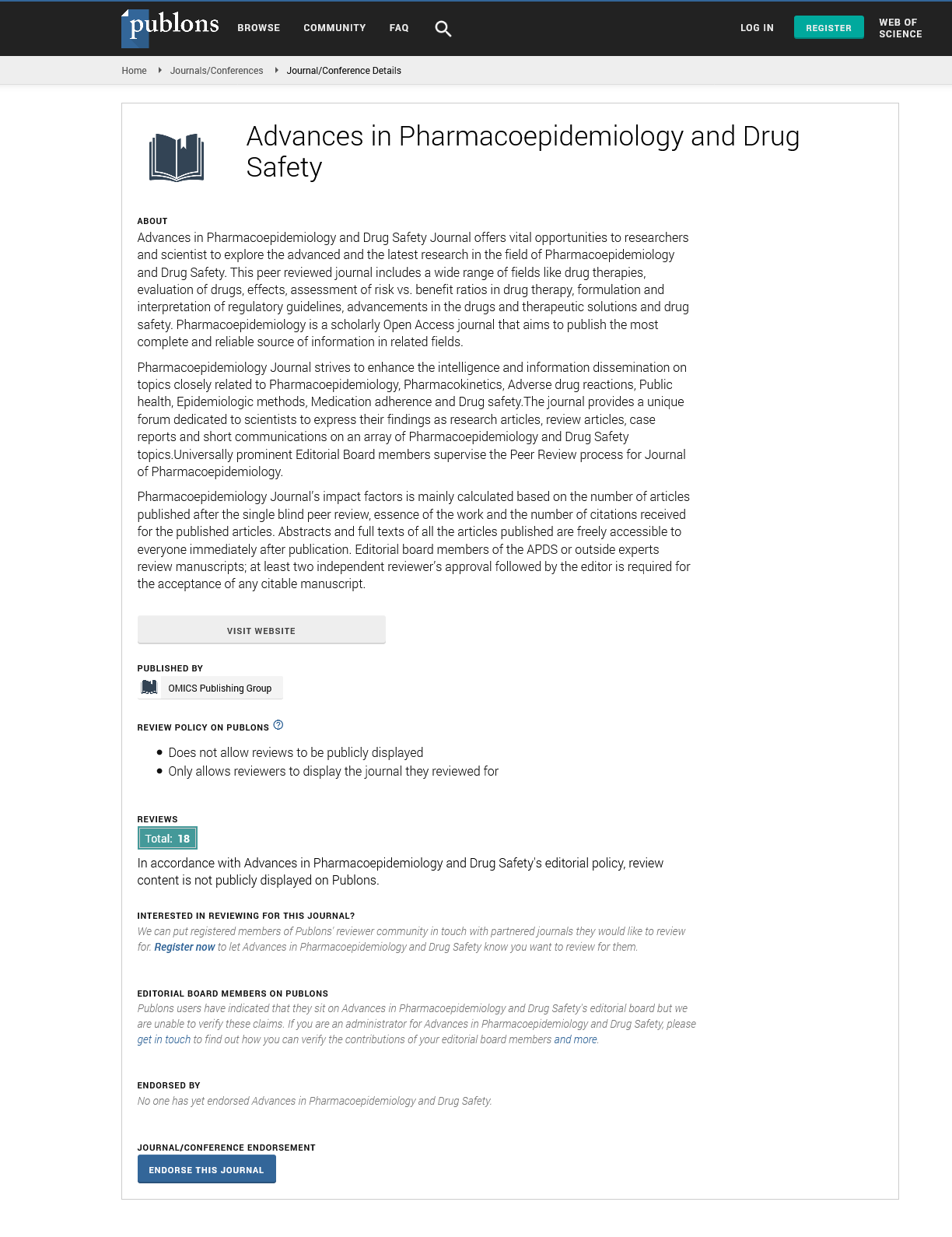Indexed In
- Open J Gate
- Genamics JournalSeek
- Academic Keys
- JournalTOCs
- RefSeek
- Hamdard University
- EBSCO A-Z
- SWB online catalog
- Publons
- Geneva Foundation for Medical Education and Research
- Euro Pub
- Google Scholar
Useful Links
Share This Page
Journal Flyer

Open Access Journals
- Agri and Aquaculture
- Biochemistry
- Bioinformatics & Systems Biology
- Business & Management
- Chemistry
- Clinical Sciences
- Engineering
- Food & Nutrition
- General Science
- Genetics & Molecular Biology
- Immunology & Microbiology
- Medical Sciences
- Neuroscience & Psychology
- Nursing & Health Care
- Pharmaceutical Sciences
Perspective - (2025) Volume 14, Issue 2
The Role of Pharmacoepidemiology in Vaccine Safety Evaluation
Isabelle Laurent*Received: 29-May-2025, Manuscript No. PDS-25-29864; Editor assigned: 31-May-2025, Pre QC No. PDS-25-29864; Reviewed: 14-Jun-2025, QC No. PDS-25-29864; Revised: 20-Jun-2025, Manuscript No. PDS-25-29864; Published: 28-Jun-2025, DOI: 10.35248/2167-1052.25.14.390
Description
Vaccination remains one of the most powerful tools in modern public health, significantly reducing the burden of infectious diseases across populations. However, the widespread use of vaccines also necessitates rigorous and continuous monitoring to ensure their safety. Pharmacoepidemiology plays a crucial role in this effort, providing real-world evidence that supplements the data obtained from pre-licensure clinical trials. Since vaccines are frequently administered to healthy individuals including children, the elderly and those with pre-existing conditions even very rare adverse events can have profound consequences for public trust and policy decisions. While clinical trials are effective at evaluating a vaccine’s short-term safety and efficacy, they are often limited in size and duration. As a result, these trials may fail to detect rare or long-term adverse effects that only become apparent after the vaccine is distributed on a large scale. Once a vaccine is rolled out to millions of people, pharmacoepidemiologic methods become essential for identifying unexpected outcomes such as severe allergic reactions, neurological disorders or autoimmune complications. By linking immunization records with hospital admissions, laboratory results and mortality databases, surveillance systems allow for the rapid detection and investigation of potential safety signals.
One of the key strengths of pharmacoepidemiology in vaccine monitoring is its ability to establish accurate incidence rates for adverse events and compare them with background rates in the general population. This comparative approach is critical for distinguishing between coincidental health events and those that may be causally related to vaccination. It provides a scientific basis for risk assessment, helping to determine whether an observed adverse effect is truly vaccine-related or likely to have occurred independently. Such assessments have played a central role in validating the safety profiles of widely used vaccines and in identifying rare risks that require further scrutiny or action. Global collaboration has significantly expanded the reach and power of vaccine safety monitoring. By sharing data across countries, large multinational networks can pool information and enhance statistical strength, making it possible to detect rare adverse events that might not be visible within individual nations. A prominent example is the surveillance of influenza and COVID-19 vaccines, where coordinated international pharmacoepidemiology studies evaluated safety across billions of administered doses. These collaborations enabled regulatory agencies and healthcare providers to access up-to-date, reliable safety data and make informed decisions on vaccine use and guidance.
The emergence of novel vaccine platforms, such as mRNA-based vaccines, has further underscored the value of ongoing pharmacoepidemiology evaluation. While early-phase clinical trials provided promising efficacy results, real-world monitoring was critical in confirming safety across diverse population groups, including individuals with chronic illnesses or other vulnerabilities. Through detailed post-marketing studies, researchers were able to validate the infrequency of serious side effects and, where necessary, recommend modifications to dosing intervals or booster policies. This process provided reassurance to the public and reinforced confidence in new vaccine technologies. In addition to monitoring safety, pharmacoepidemiology contributes significantly to assessing real-world vaccine effectiveness. By connecting vaccination data with information on infections, hospitalizations and mortality, researchers can determine how well vaccines perform outside the controlled setting of clinical trials. These insights help shape public health strategies, such as the timing and targeting of booster doses or prioritizing vulnerable populations during outbreaks. This real-world data complements safety monitoring, supporting comprehensive evaluations of vaccine performance.
Pharmacoepidemiology also plays a vital role in effective risk communication. By presenting transparent, evidence-based information about the frequency and severity of vaccine-associated adverse events, researchers support public understanding and counteract misinformation. When adverse events are clearly contextualized and communicated with scientific integrity, people are more likely to trust vaccination programs. This transparency is essential in maintaining high vaccination coverage and ensuring that immunization efforts remain effective and sustainable. Despite these advancements, challenges in vaccine safety surveillance persist. Variability in data quality, underreporting in passive surveillance systems and differences in healthcare infrastructure between countries can affect the consistency and reliability of findings. Moreover, concerns about data privacy and the ethical use of patient information require careful management. Nevertheless, continuous methodological improvements and increasing international collaboration are addressing these limitations. The incorporation of digital technologies such as mobile reporting apps, wearable health monitors and automated data systems is making vaccine safety research more accurate and responsive.
In conclusion, pharmacoepidemiology has become an indispensable component of global vaccine safety efforts. Through the integration of surveillance data, cross-border collaborations and real-world evidence generation, it ensures that immunization programs are both effective and safe. The insights gained not only protect individual recipients from harm but also bolster public confidence in vaccines as a foundation of disease prevention. As vaccination technologies evolve and global immunization campaigns expand, pharmacoepidemiology will continue to be central in guiding safe, evidence-based practices that safeguard population health.
Citation: Laurent I (2025). The Role of Pharmacoepidemiology in Vaccine Safety Evaluation. J Adv Pharmacoepidemiol Drug Saf. 14:390
Copyright: © 2025 Laurent I. This is an open access article distributed under the terms of the Creative Commons Attribution License, which permits unrestricted use, distribution and reproduction in any medium, provided the original author and source are credited.

